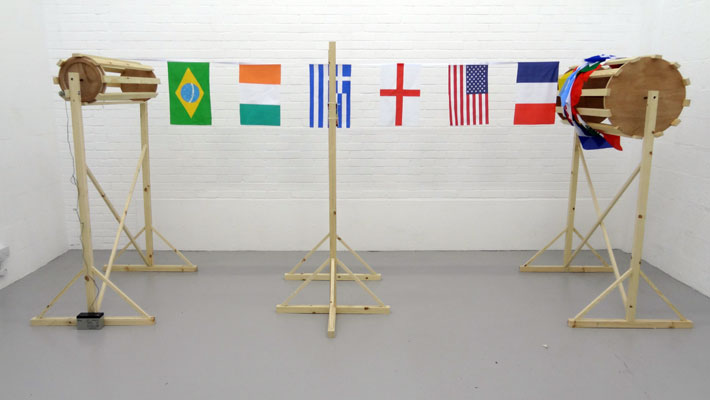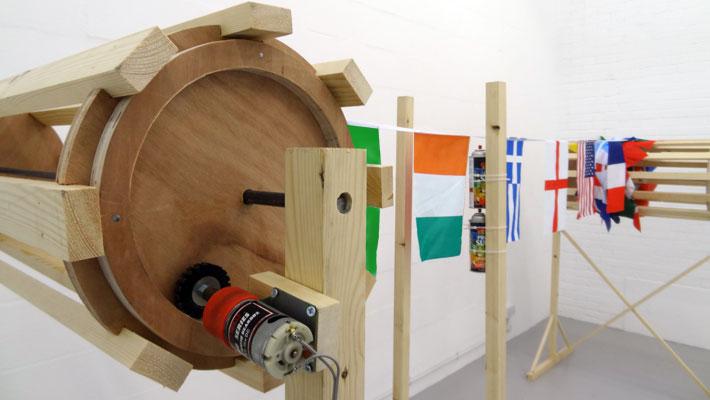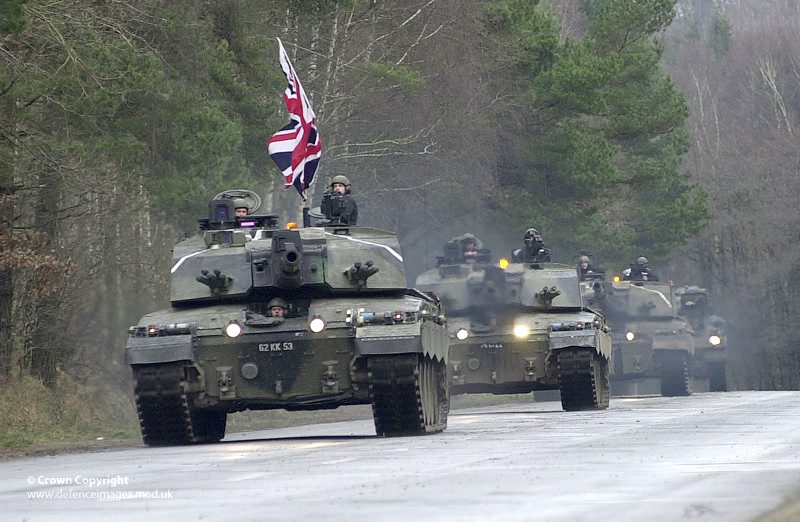
 Jan25 2016, Amsterdam
Jan25 2016, Amsterdam Luke Jerram’s Flag Machine: Interview
In our search for inspiration for the forthcoming open classroom “Searching for a New European Symbolism” Charlien discovered a remarkable work by Bristol-based artist Luke Jerram, the “Flag Machine”. Part of a series exploring the history, meaning and use of national flags, the work specifically considers how flags are used to promote and communicate nationalism.
Put simply, the Flag Machine paints national flags white. It’s a relatively straightforward idea: by making the flags white, the machine removes and alters their meaning. But what at first seems like a fairly simple gesture is anything but. For starters, flag desecration constitutes a criminal offence in some countries. In fact, Jerram describes on his website having to seek legal advice before the exhibition and eventually deciding not to operate the machine during the exhibition.

Speaking to him via e-mail I asked him whether he was tempted to throw caution to the wind and switch the machine on. “I was very tempted,” he said “and thought through the ramifications quite carefully. I thought I could create another machine to switch on the first. Or I could have created a system where my cat, would have switched the machine on, instead of me.” But he conceded that the work’s purpose was not neccessarily to upset people. “Over in the USA children are asked to swear allegiance to the flag every day in school. Doing this every day for several years is going to make people very precious about the object and what it means.”
"…if you have a worn out flag in the USA, the official recommendation for its disposal, from the authorities, is setting fire to it!!"
In a way, choosing to keep it switched off and explaining his reasons for doing so enhances the power of the work, helping to underline the peculiar grey area that flags occupy between the symbolic and the physical realm. How does a flag become sacred, and something that needs protecting? We have to be sensitive to something that is essentially a piece of fabric. But while we can burn a piece of fabric we would certainly hesitate before burning a flag. “What’s hilarious,” Jerram continued, “is that if you have a worn out flag in the USA, the official recommendation for its disposal, from the authorities, is setting fire to it!!”
Discussing the Flag Machine on his website Jerram is relatively ambivalent about the overall role of the national flag. He talks of them having the ability to create unity between people, but that this is predicated on the exclusion of others. Considering our own concern for producing a more progressive symbolism. I asked him whether he thinks the introduction of a more varied and progressive set of symbols and styles could help make flags both unifying and inclusive. He was relatively pessimistic about the value of this, “Flags are flags,” he said,“changing the patterns won’t change how they operate and how they can be used and misused. Flags can be unifying and inclusive. I think when a flag like the Union Jack or the American flag is finally settled upon, it can help coalesce and unify the people within a country. I think it can help stop fighting internally. Unfortunately it can then be damaging to those on the edge of the country who are suddenly seen as outsiders. Flags are used to rally troops and as a divisive tool in war.”
He singled out an image of the flag atop a tank to make his point:

There is no doubt that imagery like this is, as Jerram described to me, “deeply problematic”…. But in my final question I elaborated on the point: given that society is more inclined to rapid change and constant shifting of boundaries, both physical and cultural, I asked him whether he thought it would be appropriate to be constantly overhauling the symbols that communities use to define themselves.
"My solution to this problem was to gradually fly a smaller and smaller flag there each month, until its the size of a postage stamp and nobody cares or notices it."
“Continually changing them would be a great way to reduce the power they have,” he admitted, also providing an example from his own work in relation to the problems and arguments in Belfast about the use of the flag there….
“My solution to this problem was to gradually fly a smaller and smaller flag there each month, until it’s the size of a postage stamp and nobody cares or notices it. Alternatively authorities should fly all the other flags of Europe and dilute the problem.”
It was nice in the end to have our nascent project somewhat vindicated. Sure, we can’t change the way flags operate just by coming up with some new symbols, but we can perhaps contribute to a more progressive symbolic representation of society by changing the symbols more frequently. Yet what Jerram’s work really helps with is the first step in the process of coming up with a new European symbolism. By exposing the absurd protection of what is in essence a piece of coloured cloth (if that!) he thereby punctures the overinflated aura of the national flag, and prepares the ground for something less totalising in its place.
Stichting EU2016 Plan C p/a Pakhuis de Zwijger Piet Heinkade 179
1019 HC amsterdam tel 020 - 624 63 80 hello@neweuropeans.org






comments